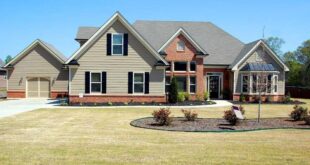Sustainable building practices are transforming the way we design, construct, and operate buildings. As the world grapples with the pressing challenges of climate change and resource depletion, adopting environmentally responsible construction methods is crucial for creating a more sustainable future. These practices aim to minimize the environmental impact of buildings, reduce energy consumption, and create healthy, efficient spaces for people to live and work.
In this blog, we will explore the importance of sustainable building practices, key strategies, and the benefits they bring to both the environment and the people who inhabit these structures.
What is Sustainable Building?
Sustainable building, also known as green building, refers to the practice of designing, constructing, and operating buildings in an environmentally responsible and resource-efficient manner throughout their life cycle. This includes the planning, construction, operation, maintenance, renovation, and demolition of buildings with an emphasis on minimizing their negative environmental impact.
Sustainable buildings aim to conserve resources, reduce waste, enhance energy efficiency, and promote the well-being of occupants. The goal is to create buildings that have a minimal carbon footprint and reduce long-term operational costs while contributing positively to the environment.
Why Sustainable Building Practices Matter
The built environment is a major contributor to global environmental challenges. According to the United Nations, buildings account for nearly 40% of global energy-related CO2 emissions. As urbanization increases, it becomes even more critical to implement sustainable building practices to address issues such as energy consumption, water usage, and waste management.
Here are a few reasons why sustainable building practices matter:
- Environmental Impact: Buildings consume vast amounts of energy, water, and raw materials. They also generate significant waste during construction and demolition. By adopting sustainable practices, we can reduce the environmental footprint of buildings and help preserve natural resources.
- Climate Change Mitigation: The construction industry is a major emitter of greenhouse gases. Sustainable buildings help mitigate climate change by incorporating energy-efficient systems, renewable energy sources, and low-carbon materials.
- Health and Well-being: Sustainable buildings prioritize occupant health by providing better indoor air quality, natural light, and improved ventilation. This leads to healthier environments that can positively impact productivity and overall well-being.
- Economic Benefits: Although sustainable buildings may require higher initial investment, they often lead to long-term savings through energy efficiency, reduced maintenance costs, and higher property value. Furthermore, green buildings can attract tenants and buyers who prioritize sustainability.
Key Strategies for Sustainable Building Practices
To achieve sustainable building objectives, architects, engineers, and construction professionals rely on various strategies that incorporate energy-efficient technologies, renewable materials, and environmentally responsible design principles.
Here are some of the most common sustainable building practices:
1. Energy Efficiency
Energy consumption is one of the most significant environmental impacts of buildings. Sustainable buildings are designed to minimize energy usage by incorporating energy-efficient technologies, such as LED lighting, energy-efficient HVAC systems, and smart building management systems.
In addition, passive design strategies, such as maximizing natural light, improving insulation, and utilizing solar heat gain, can reduce the reliance on artificial heating and cooling systems. A net-zero energy building, which produces as much energy as it consumes, is the ideal outcome for energy-efficient design.
2. Renewable Energy Integration
Integrating renewable energy sources, such as solar panels, wind turbines, or geothermal heating and cooling systems, into buildings can further reduce their carbon footprint. These systems harness natural energy sources to power the building, reducing reliance on fossil fuels.
For example, solar panels can generate electricity, while geothermal systems can provide heating and cooling, offering significant savings on energy bills and reducing greenhouse gas emissions.
3. Water Efficiency
Water conservation is another essential aspect of sustainable building practices. With water scarcity becoming an increasing global concern, it’s vital to design buildings that minimize water consumption. This can be achieved through low-flow fixtures, rainwater harvesting systems, and water-efficient landscaping.
Green roofs, which capture and reuse rainwater, can also help manage stormwater runoff and contribute to building insulation. By reducing water usage and improving water management, sustainable buildings can lessen the strain on local water resources.
4. Sustainable Materials and Resources
The materials used in construction have a significant impact on a building’s sustainability. Sustainable materials are renewable, locally sourced, and have a low environmental impact in terms of extraction, transportation, and disposal. These materials include recycled steel, bamboo, reclaimed wood, and low-VOC (volatile organic compound) paints and finishes.
Additionally, using materials that promote energy efficiency, such as high-performance insulation, reflective roofing materials, and energy-efficient windows, can enhance a building’s sustainability.
5. Waste Reduction and Recycling
Sustainable buildings prioritize waste reduction during construction and throughout their operational life. Builders can minimize waste by using prefabricated components, which reduce on-site construction waste, and by recycling materials like concrete, wood, and metals.
Moreover, incorporating systems for composting and recycling within the building, such as designated recycling bins or composting facilities, helps reduce the amount of waste sent to landfills.
6. Indoor Environmental Quality (IEQ)
Indoor air quality and occupant comfort are key components of sustainable buildings. Buildings should be designed to ensure good ventilation, access to natural light, and the use of non-toxic materials to promote a healthier indoor environment.
Proper ventilation systems, air filtration, and the use of materials that do not off-gas harmful chemicals contribute to better indoor air quality. Access to natural daylight and views of outdoor greenery can also improve the mental and physical well-being of occupants.
Benefits of Sustainable Building Practices
Adopting sustainable building practices offers numerous benefits, not only for the environment but also for building owners, occupants, and the broader community.
1. Environmental Protection
Sustainable buildings reduce energy consumption, water usage, and greenhouse gas emissions, thereby contributing to environmental conservation and climate change mitigation.
2. Cost Savings
While sustainable buildings may incur higher upfront costs, they often lead to significant savings in the long run. Energy-efficient buildings reduce utility bills, while low-maintenance materials lower repair and replacement costs.
3. Healthier Living and Working Environments
By incorporating features that improve indoor air quality, lighting, and thermal comfort, sustainable buildings create healthier spaces that can enhance occupant productivity, comfort, and overall well-being.
4. Increased Property Value
Sustainable buildings are increasingly in demand, and properties with green certifications tend to have higher resale value. Additionally, these buildings are more likely to attract tenants who prioritize sustainability.
5. Conservation of Resources
Sustainable buildings use resources more efficiently, helping to conserve valuable natural resources such as water, energy, and raw materials. This is particularly important as global demand for these resources continues to rise.
Conclusion
Sustainable building practices are an essential part of the solution to many of the world’s most pressing environmental challenges. By adopting energy-efficient technologies, using sustainable materials, conserving water, and promoting healthy living environments, we can create buildings that are not only more environmentally friendly but also more cost-effective and comfortable for the people who inhabit them.
As the demand for sustainable buildings continues to grow, it is clear that the future of construction lies in responsible, green design practices. Embracing these practices is not only beneficial for the environment but also for our communities, our economy, and the generations to come.
Building for a sustainable future is more than just a trend—it is a necessity. By choosing to build sustainably, we can all play a role in shaping a better, greener world.
 Our Gateway to Insightful Blogging Exploring Ideas, Sharing Knowledge, Inspiring Minds
Our Gateway to Insightful Blogging Exploring Ideas, Sharing Knowledge, Inspiring Minds




